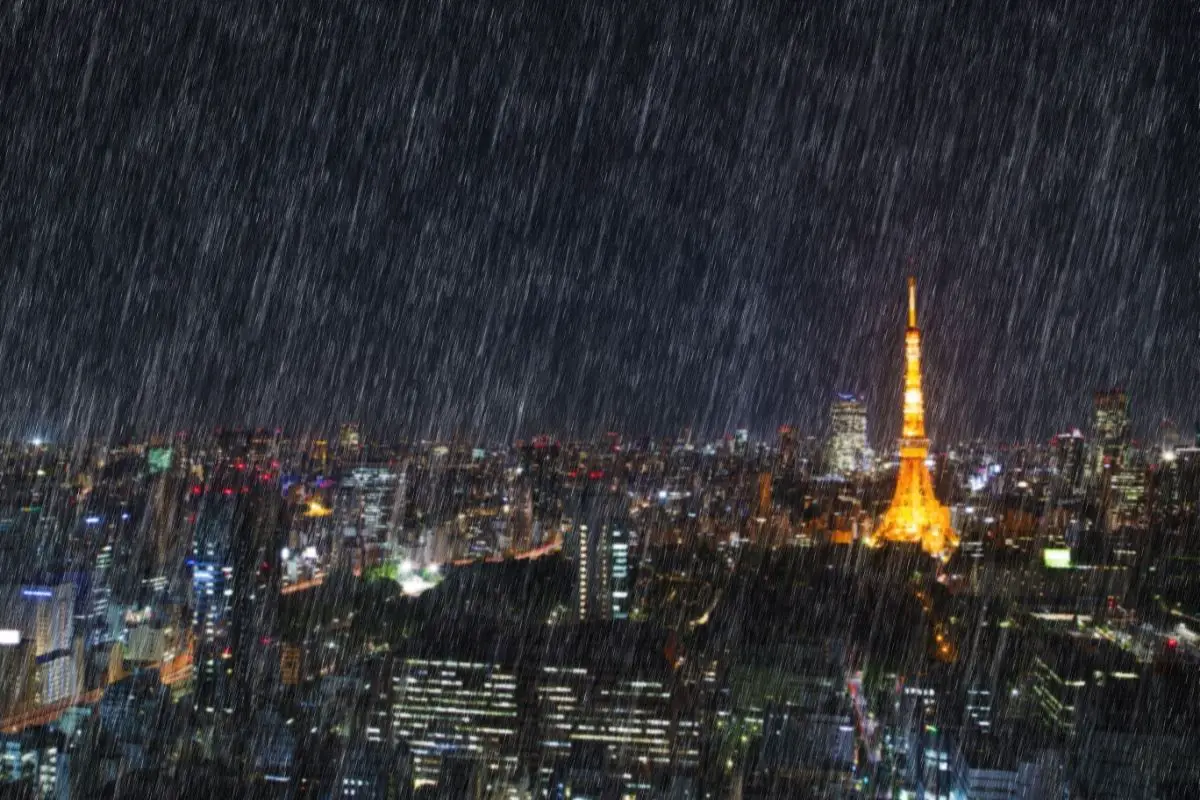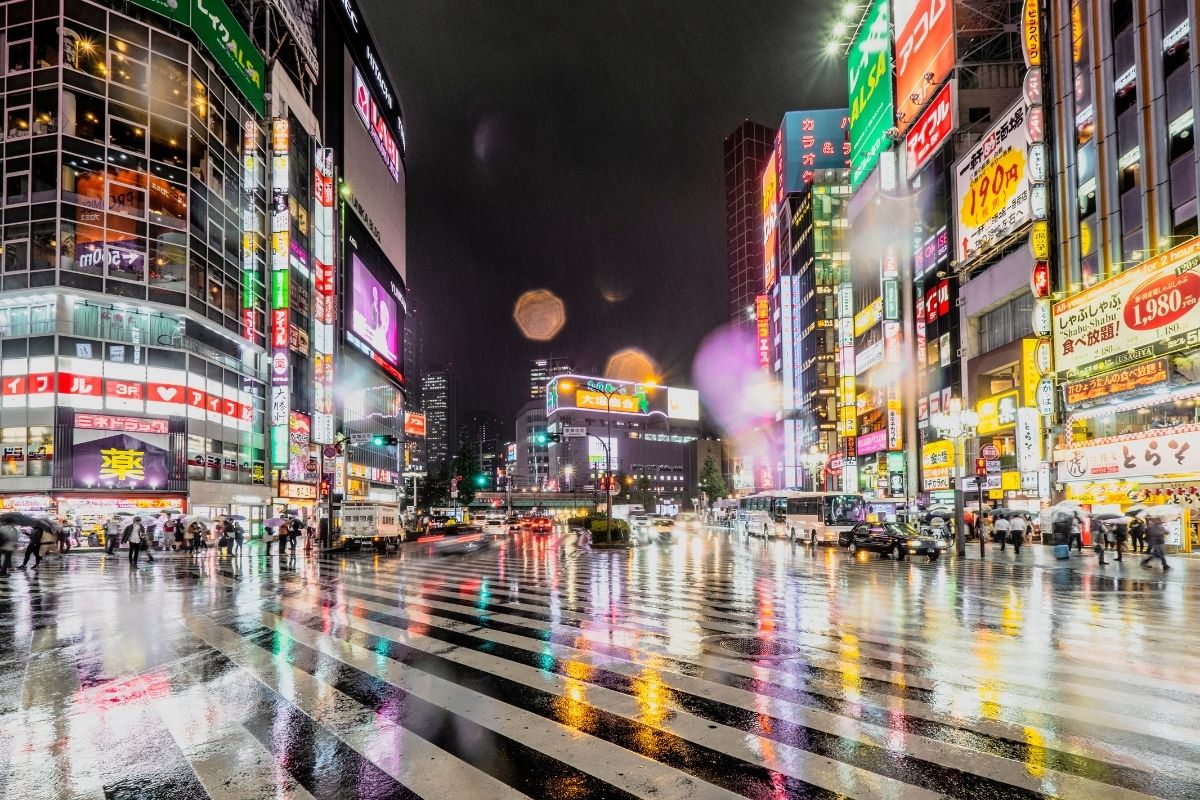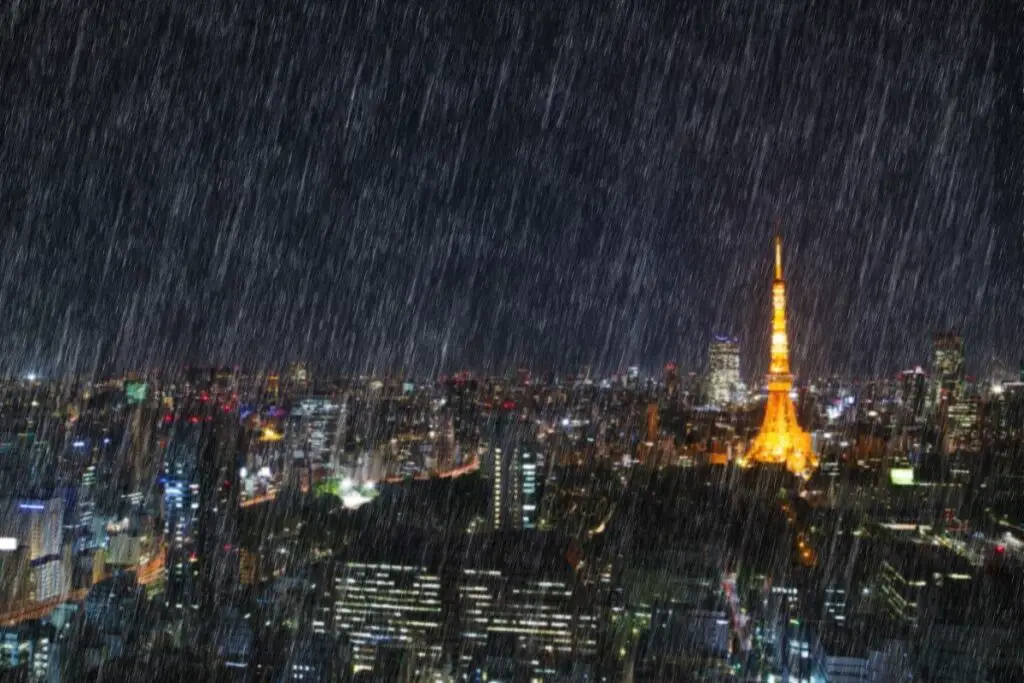Japan is a very well-known country. Its unique culture and the vast export of its creative media is staggering.
So many things in the modern world originally come from Japan, from products to foods to even branding, we have a lot to be thankful to the Japanese for.

However, if I were to ask you about day-to-day life in Japan, you might falter. It is easy to imagine daily life in the US, even the most parodied parts of our culture hold grains of truth in them.
Yet, for the life of a Japanese person, many people outside of Japan would struggle to imagine it.
Sure, there are parts that are always going to be the same, as mobile phones or public transport, but the similarities end there. One thing people find hard to imagine about Japan is what sort of weather it has.
When you watch an anime or a Ghibli movie, the scenes that have weather are being used for effect and don’t really give a good indication about the weather at all.
With that in mind, does it rain a lot in Japan? Today, we seek the answer to this question and hope to give you a full rundown of the weather in Japan.
Climate of Japan
The climate of Japan is surprisingly varied, and it may have one of the most temperamental climates on earth. This is due to its position in the Pacific and its size.
The islands of Japan don’t go straight across as you see on the flattened world maps that we have, instead they actually go diagonally upwards with the island of Kyushu being the most southerly and Hokkaido the most northerly with about 1500 miles between these two islands.
As such, the difference in climate and temperature can be intense, which is not helped by the weather systems that are active over the pacific coast.
On the Japanese islands, there are generally two predominant systems that play a key role in the weather.
The first is a polar system that sweeps down from Siberia and the Bering Sea. This system brings huge amounts of snowfall and cool air onto the islands.
The second is a tropical maritime system that brings rainfall and humidity from the Southern Pacific Ocean and the Philippines.
These two systems are dominant at different times of the year and give the islands their varied weather.
However, the systems vying for control, the landscape, and temperamental winds mean that each area of Japan has developed its own climate. In total, there are six climate zones in Japan (Just how big is Japan? Read here to find out more).
The island of Hokkaido has a humid continental climate with cooler summers and longer, colder winters. The areas of northern Japan – Chubu, Kanto, and Tohoku – experience the heavy snowfall of Hokkaido, but this usually melts before spring in everywhere except the Tohoku region.
The summers are a little less hot and rainy than the south, but still quite high in levels of both.
The Central Highland areas of Kansai experience extreme ranges of temperatures, and they often change dramatically depending on the season and during the day/night cycle.
There tends to be less rain in this region as well, due to it being a mountainous inland area.
The areas of northern Shikoku and southern Chugoku around the Seto Inland sea have a very mild climate, with temperatures never soaring or dropping, thanks to the mountains on either side of each region blocking the winds and the more extreme weather.
The Pacific Ocean climate region of Japan varies greatly thanks to the distance between areas, with the northernmost pacific region being either southern Shikoku or northern Chugoku and the southernmost being the Ogasawara Islands.
The summers in this area are long and sweltering, and the winters are mild and sunny. Each area swings between being a humid subtropical climate to a tropical Savanna climate throughout the year.
Finally, the Ryukyu islands are the most tropical, with their climate swinging between a tropical rainforest climate and a humid subtropical climate.
The winters are warm, and the summers are hot, with rainfall being especially high and almost constant.
So, Does It Rain A Lot?
Yes! If you didn’t notice in the last paragraph, it rains an absolute ton in Japan. In fact, it is the 45 rainiest country on earth out of 194 countries in the world with an average yearly rainfall of 1600 mm.
In Japan, there is a rainy season that comes around every year. For some areas, this season starts in May and for others it starts in July, but it always comes just before and during the summer months.
This makes the rainy season incredibly humid, with some days in Japan being up to 100% humidity.
Air conditioners are found in every apartment for a reason, as otherwise people would step outside their door and just be assailed by thick air.

The only part of Japan that does not experience a rainy season is Hokkaido, the northernmost island.
Its position and the weather systems in play over Hokkaido mean its weather is a lot more like Washington state or the UK, in that it is colder and rain can come at any time, really.
Although the rainy season comes every year in the rest of Japan, that doesn’t make it predictable. One day it may be a slight drizzle that falls gently downward.
Another it might be a full-blown typhoon howling and sweeping through a city. The further north you go, the less bad it gets, so if you plan to visit western or southern Japan, I suggest keeping an eye on weather updates.
If you are not a fan of the rain, then the best time of year to visit Japan would be the winter or spring months (see also, ‘When is Winter in Japan?‘). The rains tend to end around the end of October, with slight drizzles appearing throughout the early parts of October.
Japan does get a lot of snow (see also ‘Does It Snow In Japan?‘), but compared to the US or Europe, its winters are mild in temperature and never really go below 5 degrees Celsius.
Spring is good because it has yet to have any rains, it is a little warmer, and a little brighter as well. The problem for Spring is the sheer amount of people who visit Japan in the spring (see also, ‘When is Spring in Japan?‘).
If you are looking to avoid the rains and the crowds, then visit at the end of February or early March. You will still see blossoms, but not as many people around.
Is The Rainy Season Bad?
Not at all, though it may seem that way. Without the rainy season, Japan would be unable to grow the large amounts of rain that they do.
Rice requires a paddy full of water to grow well, which would not be possible if there was less rainfall hitting the country.
Not only that, but the vibrant and luscious Japanese countryside that is dotted with huge forests and plains simply wouldn’t exist without the rain.
Whole ecosystems have risen thanks to the constant rain and given the country of Japan a truly beautiful visage that many tourists are dying to see.
Even when it is overcast and cloudy, this beauty seems to exist and the backdrop of mountains surrounded by white clouds is picturesque in its imagery.
Final Thoughts
Japan is a wet country. The rainfall in Japan is more than most countries on earth, and it even has a rainy season for most of the islands that exist as a part of Japan.
The cities and people of Japan can experience a slight drizzle or hurricane level precipitation, with anything in between as well.
However, being a rainy country is not necessarily a bad thing. Japan has some incredibly beautiful forests, plains, rivers, and flowers that can only exist thanks to the huge amounts of rainfall that hit the country every year.









